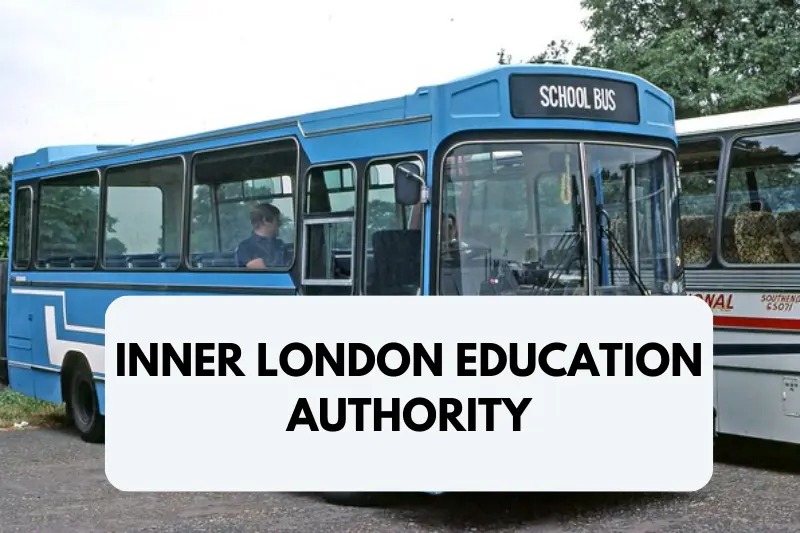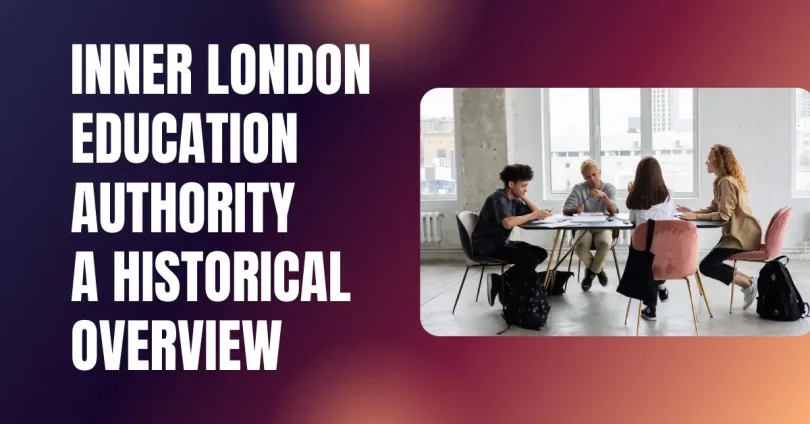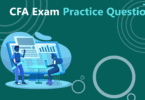Introduction
The Inner London Education Authority was a major educational governing body that played a significant role in shaping the education system in Inner London. Established in 1965, it managed schools, developed policies, and ensured quality education for students in the region. Even though it was abolished in 1990, its influence can still be seen in many aspects of modern education.
Education has always been a central part of society, evolving with time to meet new challenges. The Inner London Education Authority focused on providing equal learning opportunities, improving school infrastructure, and supporting teachers. It introduced several progressive policies that influenced education across the country. Many discussions in educational news today still reference the impact of the authority, as it set standards for curriculum development, student welfare, and teacher training.
With advancements in tech & education, learning methods have changed significantly since the time of the Inner London Education Authority. However, the authority’s structured approach to school governance and investment in student development still serve as a model for educational policies. It promoted inclusivity, innovation, and comprehensive education, which remain key concerns in modern learning systems.
Inner London Education Authority

The Inner London Education Authority was a local government body responsible for overseeing education in the Inner London area from 1965 to 1990. It was created to manage schools, colleges, and other educational institutions, ensuring that students received high-quality education. The authority succeeded the education department of the London County Council and continued its mission of improving learning opportunities for all.
- One of the key aspects of the Inner London Education Authority was its centralized control over education. Unlike other areas where local borough councils handled education independently, this authority managed all schools under a single system. This approach allowed for uniform policies, better resource distribution, and equal opportunities for students across different schools.
- The Inner London Education Authority was known for its forward-thinking educational policies. It introduced comprehensive schools, which provided a more inclusive learning environment compared to the selective grammar school system. By promoting comprehensive education, the authority aimed to create equal learning opportunities for students regardless of their backgrounds.
- The authority also invested in teacher training and professional development programs. It ensured that educators had access to the latest teaching methods and resources. This focus on teacher support helped improve the overall quality of education in the region.
- Another important contribution of the Inner London Education Authority was its emphasis on innovation. It experimented with new teaching methods, introduced modern technology in classrooms, and encouraged schools to adopt creative approaches to education. This focus on innovation helped shape many of the educational practices still in use today.
- Despite its achievements, the authority faced several challenges. It required significant government funding, which led to debates about its financial sustainability. Some critics argued that its centralized system limited the independence of individual schools and that its operational costs were too high. These financial and political issues eventually led to its abolition in 1990, with education responsibilities being transferred to individual London boroughs.
- Although the Inner London Education Authority no longer exists, its impact remains visible in modern education. Many of the policies and educational strategies it introduced continue to influence schools and learning institutions. Understanding its role provides valuable insights into how educational governance has evolved and what lessons can be applied to improve today’s education system.
Why Is Inner London Education Authority Important
The Inner London Education Authority played a crucial role in shaping the education system of Inner London. Its impact on educational policies, school management, and student welfare remains relevant even after its dissolution. The authority’s contributions continue to influence modern education in various ways.
Key reasons why the Inner London Education Authority was important include:
- Centralized Education System
The authority managed all schools in Inner London under a single framework, ensuring consistency in policies, curriculum, and teacher training. This helped maintain high education standards across the region. - Focus on Equal Opportunities
It introduced comprehensive schools to provide equal learning opportunities for all students, regardless of their social or economic backgrounds. This approach helped reduce educational disparities. - Teacher Training and Development
The authority invested in professional development programs for teachers, ensuring they were well-equipped with the latest teaching methodologies. This improved the overall quality of education. - Innovative Learning Methods
The Inner London Education Authority encouraged schools to adopt modern teaching techniques and technology. This focus on innovation helped shape the future of education. - Student Welfare and Support
It implemented various programs to support students, including free school meals, psychological counseling, and career guidance, ensuring their overall well-being. - Resource Allocation and Infrastructure Development
The authority ensured that schools had adequate resources, from books and learning materials to well-maintained infrastructure, creating a better learning environment. - Special Education Programs
It introduced programs for students with special educational needs, making education more inclusive and accessible for all. - Educational Research and Development
The authority conducted research on education trends and policies, helping schools adopt best practices for improved learning outcomes. - Community Engagement
It worked closely with local communities, parents, and educators to develop policies that addressed the specific needs of students and schools. - Long-Lasting Influence on Education
Even after its dissolution, many of its policies and approaches continue to inspire modern educational strategies and reforms in the UK.
Advantages And Disadvantages Of Education
Education plays a fundamental role in shaping individuals and societies. While it offers numerous benefits, there are also some challenges that need to be addressed.
Advantages Of Education
| Reduces Crime Rates Education helps individuals understand the consequences of their actions and encourages positive behavior. Well-educated societies tend to have lower crime rates. |
| Encourages Innovation And Technology Education fosters creativity and research, leading to advancements in science, technology, and medicine that improve the quality of life. |
| Empowers Women And Promotes Gender Equality Education plays a crucial role in empowering women by providing them with the knowledge and confidence to participate in economic and social activities. |
| Improves Health Awareness Educated individuals are more likely to adopt healthy lifestyles, understand the importance of medical care, and make better health-related decisions. |
| Enhances Communication Skills Learning improves language and communication abilities, allowing individuals to express their ideas effectively in both personal and professional settings. |
| Promotes Equality And Inclusion Education bridges the gap between different social classes by providing equal opportunities for all, regardless of background, gender, or financial status. |
| Encourages Social Development Educated individuals contribute to a more informed and responsible society. They are more likely to participate in community activities, make informed decisions, and support social causes. |
| Boosts Economic Growth Education contributes to national development by creating a skilled workforce. Countries with high literacy rates tend to experience better economic growth and innovation. |
| Improves Career Opportunities A good education increases job prospects, enabling individuals to secure better employment opportunities and higher salaries. Well-educated individuals have a competitive edge in the job market. |
| Enhances Knowledge And Skills Education provides individuals with the knowledge and skills necessary for personal and professional growth. It helps people develop critical thinking, problem-solving abilities, and creativity. |
Disadvantages Of Education
| Limited Focus On Life Skills Many education systems do not emphasize essential life skills such as financial literacy, emotional intelligence, and communication, which are crucial for personal and professional success. |
| Standardized Learning Methods Not all students learn the same way, yet many education systems use standardized teaching methods that do not cater to individual learning needs. |
| Dependence On Technology While technology enhances learning, excessive reliance on digital education can reduce critical thinking and problem-solving abilities in students. |
| Cultural And Social Barriers In some societies, cultural and social restrictions limit access to education, particularly for women and minority groups. |
| Lack Of Practical Knowledge Traditional education often focuses on theoretical learning rather than practical skills, leaving students unprepared for real-world challenges. |
| Unemployment Despite Education Having a degree does not always guarantee employment. Many graduates struggle to find jobs due to a mismatch between education and industry demands. |
| Overemphasis On Exams And Grades Many education systems focus more on grades and test scores rather than actual learning and skill development. This can discourage creativity and independent thinking. |
| Inequality In Education Despite efforts to provide equal opportunities, disparities still exist between urban and rural education, public and private schools, and different socioeconomic classes. |
| Pressure And Stress On Students The academic system often places a high level of pressure on students to perform well in exams, leading to stress, anxiety, and mental health issues. |
| High Cost Of Education Quality education can be expensive, making it inaccessible to many individuals, especially in developing countries. The cost of tuition, books, and other resources can be a barrier. |
A Step By Step Guide To Understanding Inner London Education Authority

Understanding the Inner London Education Authority requires looking at its history, functions, impact, and challenges. Below is a step-by-step guide to help you navigate its role in education.
Learn About Its Establishment
- Understand that the Inner London Education Authority was formed in 1965 as a successor to the London County Council’s education department.
- It was created to manage education in Inner London under a centralized system.
Understand Its Objectives
- The primary goal was to ensure quality education for all students.
- It promoted comprehensive schooling and equal learning opportunities.
- It focused on teacher training, school infrastructure, and innovative education policies.
Explore Its Key Policies
- The authority introduced progressive reforms like comprehensive schools.
- It invested in student welfare programs, free school meals, and career counseling.
- It encouraged the use of modern teaching methods and technology in education.
Analyze Its Contribution To Education
- The ILEA improved education accessibility and inclusivity.
- It played a role in developing teacher training programs and modern curricula.
- It set a model for centralized educational governance.
Examine The Challenges It Faced
- The authority struggled with financial sustainability due to high expenditures.
- Political opposition led to debates over its effectiveness.
- The centralized system was criticized for reducing local school independence.
Understand Its Abolition And Aftermath
- The authority was abolished in 1990, and responsibilities were transferred to local boroughs.
- Its legacy continues to influence modern education policies.
Study Its Lasting Impact
- Many of its policies on inclusive education and teacher support still exist.
- It demonstrated the benefits and limitations of centralized education governance.
Challenges And Their Solutions
Despite its contributions, the Inner London Education Authority faced several challenges. Here are some of the key issues and their possible solutions.
High Financial Costs
- Challenge: The ILEA required substantial government funding, leading to debates about its sustainability.
- Solution: Better budget management and cost-effective policies could have ensured financial stability.
Centralized System Concerns
- Challenge: Critics argued that a single governing body limited school autonomy.
- Solution: A balance between centralized policies and local school independence could have been maintained.
Political Opposition
- Challenge: The authority faced resistance from various political groups.
- Solution: Engaging with stakeholders and making decisions based on educational research could have improved acceptance.
Changing Education Needs
- Challenge: The education system needed to evolve with new teaching methods and technologies.
- Solution: Regular policy updates and investments in educational research could have kept it relevant.
Lack Of Standardized Teacher Training
- Challenge: Some educators lacked proper training in modern teaching methods.
- Solution: Continuous professional development programs could have helped teachers adapt.
Resource Allocation Issues
- Challenge: Some schools received fewer resources than others.
- Solution: A fair and transparent resource distribution system could have ensured equal opportunities.
Student Welfare Programs Management
- Challenge: Managing large-scale welfare programs was complex.
- Solution: Better monitoring and collaboration with social services could have improved efficiency.
Future Of Inner London Education Authority
Although the Inner London Education Authority no longer exists, its influence continues to shape modern education policies. Looking ahead, several aspects of its governance model could be adapted for future education reforms.
- Decentralized But Coordinated Education Systems
While fully centralized control may not be feasible, a well-coordinated education system can help maintain consistency in education quality. - Investment In Technology And Innovation
The rise of digital learning tools, online education, and tech-driven teaching methods could be an extension of ILEA’s innovative approach. - Enhanced Teacher Training Programs
Developing nationwide teacher training programs, similar to ILEA’s initiatives, can improve the education system. - Continued Focus On Inclusivity
The authority’s commitment to equal education opportunities should be reinforced in modern policies.
Frequently Asked Questions (FAQs)
What Was The Inner London Education Authority?
The Inner London Education Authority was a local government body responsible for managing education in Inner London from 1965 to 1990.
Why Was The Inner London Education Authority Created?
It was created to ensure a standardized education system across Inner London by overseeing schools, teachers, and student programs.
What Were The Key Achievements Of The ILEA?
It introduced comprehensive schooling, invested in teacher training, and implemented student welfare programs.
Why Was The ILEA Abolished?
It was abolished due to financial concerns, political opposition, and a shift towards local borough control of education.
How Did The ILEA Impact Teachers?
It provided teacher training, fair wages, and professional development opportunities.
Did The ILEA Support Special Education?
Yes, it introduced programs to support students with special educational needs.
What Replaced The ILEA After Its Abolition?
Education responsibilities were transferred to individual London borough councils.
Could A Similar Education Authority Be Established Again?
It is unlikely, but some elements of its centralized governance could be adapted into current education policies.
Does Any Part Of The ILEA Still Exist Today?
While the authority itself no longer exists, many of its policies and educational strategies still influence modern education.
What Lessons Can Be Learned From The ILEA?
It showed the benefits of centralized education management but also highlighted challenges like financial sustainability.
Conclusion
The Inner London Education Authority played a significant role in shaping the education system in London. Although it was abolished in 1990, its policies and approaches continue to influence modern education. The authority’s commitment to inclusivity, teacher training, and student welfare set standards that remain relevant today. By understanding its successes and challenges, education policymakers can learn valuable lessons to improve the current system. While the future of education is shaped by technology and changing learning needs, the legacy of the ILEA serves as a reminder of the importance of structured governance in education.
Ten Bonus Tips For Better Education Policies
- Prioritize Teacher Training
Well-trained teachers improve student learning outcomes. - Encourage Innovation
Schools should incorporate modern teaching methods and technology. - Ensure Equal Education Opportunities
Every student should have access to quality education, regardless of background. - Improve Student Welfare Programs
Providing free meals, mental health support, and career guidance helps students succeed. - Balance Centralized And Local Control
A mix of national policies and local school autonomy can create a more efficient education system. - Invest In Infrastructure
Schools should have well-maintained buildings, libraries, and digital learning tools. - Adapt To Changing Learning Needs
Education policies should evolve with advancements in technology and student needs. - Promote Lifelong Learning
Encouraging continuous education beyond school helps individuals stay updated with skills. - Strengthen Community Engagement
Involving parents, teachers, and local communities in decision-making improves education quality. - Regularly Evaluate Education Policies
Reviewing and updating policies ensures that education systems remain effective and relevant.







